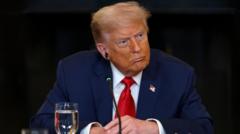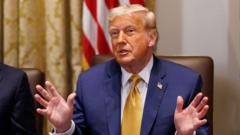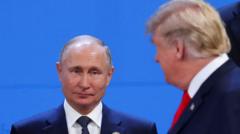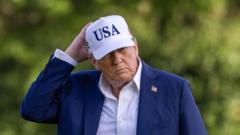Recent diplomatic activities indicate a potential thaw in relations between India and China, yet both nations face significant challenges as they navigate their complex history.
India and China: Navigating Cautious Waters in Bilateral Relations
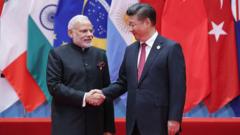
India and China: Navigating Cautious Waters in Bilateral Relations
As India and China seek to mend ties, geopolitical uncertainties loom large.
In a significant shift in diplomatic engagement, India appears to be making strides towards repairing its longstanding ties with China, despite the shadows of historical tensions and mutual suspicions. After years of border disputes that escalated dramatically in 2020, the atmosphere is slowly shifting, marked by recent visits from Indian officials to China. In June, Indian National Security Adviser Ajit Doval and Defence Minister Rajnath Singh participated in meetings related to the Shanghai Cooperation Organisation (SCO), with Singh's visit being notably the first by a senior Indian official in half a decade.
Central to the friction between the two neighbours is a poorly delineated disputed border stretching over 3,440 kilometers, often resulting in confrontational standoffs. The Galwan Valley clash in June 2020 was a stark reminder of these tensions, resulting in casualties on both sides for the first time in decades. Yet, a mix of geopolitical necessities appears to be pushing for a reconciliation. Recently, both countries were able to reach an agreement on some contentious points in Ladakh and restored direct flight operations after a long hiatus.
Trade between the two nations has flourished, with India's dependency on Chinese imports evident in the growing bilateral trade numbers, which exceeded $127 billion last year. A peaceful border is crucial for enhancing these economic ties. However, China's focus on Taiwan and its strategic relationship with Pakistan only complicate matters further. As the dynamics of international relations shift, with the U.S. strategy towards India in question, experts suggest that Delhi's outreach to Beijing is a pragmatic recalibration.
Indian relations with the U.S. have faced scrutiny, especially amid tensions with Pakistan, and Trump's administration's approach has further confused Delhi's strategy. The perception of America as a reliable ally is wavering, leading Indian officials to prioritize dialogue with China. Additionally, the long-standing alliance with Russia, wavering due to the Ukraine war, adds another layer of complexity to India's diplomatic scenario.
Meanwhile, China's recent trade maneuvers, like restricting exports of essential items such as rare earth minerals, highlight the ongoing economic competition that persists along with territorial disputes. China’s claims over Arunachal Pradesh continue to pose challenges, and any resolution on these fronts seems distant. Experts caution that peace hinges on both nations' willingness to navigate their concepts of sovereignty towards compromise.
For now, both countries recognize that fostering a beneficial working relationship may be vital to reducing tensions while moving away from overreliance on any global power bloc.






